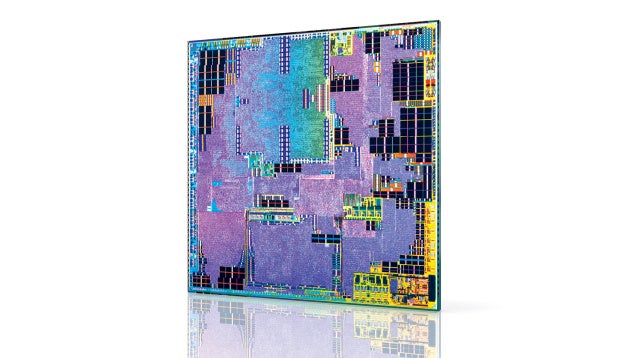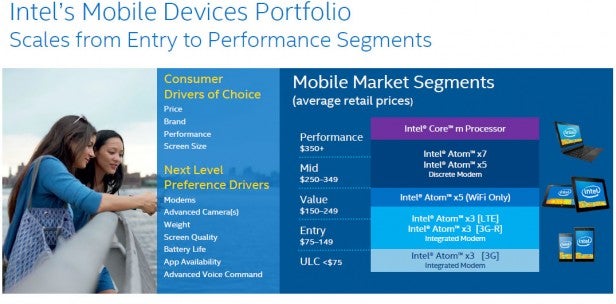Intel unveils new Atom x3, x5, and x7 mobile chips

Intel has unveiled its latest attempt at making a significant dent in the mobile devices market, with its new range of mobile processors: the Atom x3, x5 and x7.
The new range, which is actually something of a rebrand rather than a full range of new chips, is designed to be used in everything from phones and phablets, through larger tablets and up to smaller two-in-one devices.
As its name suggests the x3 is the baby of the group and it’s essentially a re-brand of SoFIA, with it meant for lower cost phone devices costing between $75 and £149. It has an integrated modem and comes in LTE, 3G-R and 3G versions so it can be targeted at various markets and price points.
Interestingly, the chips aren’t being produced by Intel but rather TSMC ‘s 28nm node, as it’s not cost effective to use Intel’s cutting-edge 14nm process.
The 3G part (x3-C3130) is dual core, runs at 1GHz and uses Mali 400MP2 graphics; the 3G-R part is quad-core and 1.2Ghz and uses Malit 450 MP4 graphics; while the LTE version is quad-core, up to 1.4Ghz and uses Mali T720 MP2 graphics.
It’s likely x3 based products won’t hit Western markets as it’ll be
aimed at such low-cost devices, but it’s possible some might sneak in.
See Also: More from the Mobile World Congress 2015

Next up are Atom x5 and x7, which are the first parts based on the Cherry Trail platform – the 14nm version of Bay Trail. The big news here is not on the CPU side – though that will get a boost – but on graphics with the parts moving from Gen 7 to Gen 8 Intel HD graphics.
This amounts to the chips having a pared-down Broadwell-level GPU as compared to a pared-down Ivy Bridge-level GPU.
These chips will be finding their way into both Android and Windows 10 devices of the tablet and two-in-one variety.
However, the crucial unknown at the moment is just how low the power consumption will be; the crucial area where Intel has trailed ARM-based CPUs in the mobile space.
Expect to see products based on the new chips arrive in the second half of 2015.

